Clay therapy offers pathways into communication and reminiscence for people with dementia
There is plenty of research about how arts and crafts can play a huge role in individual health and well-being in care homes. Clay modelling is a therapeutic activity that has become increasingly popular in the care sector.

Clay is cathartic in nature as it allows an individual to express an array of emotions. For older people and those living with dementia, clay therapy provides creative stimulation, social interaction and develops fine motor skills with a variety of positive outcomes, including increased confidence, concentration and motivation.
Rebecca Buck, professional sculptor at Osprey Studios has offered clay therapy to older people and those living with dementia as part of Arts Care Gofal Celf’s Gwalia project in Wales. She believes it is fundamental for older people and those with dementia to experience varied activities such as clay therapy.
"It’s fun, soothing and engrossing. Being creative might have played a huge part in a person’s life, happiness and self-expression. Even for those who are living with dementia, they still need an outlet," she said.
"Clay therapy can replace the verbal language that has been lost in some individuals. Several of our participants who were non-speaking and prone to angry outbursts showed wonderful skill and contentment with drawing, clay and painting. That gave their families a way to link with their loved one, which resulted in happier residents.
"Arts and crafts can create a bridge between residents and their loved ones and offers pathways into communication and reminiscence. Making family visits relaxed is therefore very important as the focus can tend to concentrate on the individual’s condition."
The qualities of clay have a calming effect on those living with dementia

A previous study, published by the American Academy of Neurology, revealed that individuals who participate in arts and craft based activities can experience a reduced risk of developing Mild Cognitive Impairment (MCI), which can often lead to dementia.
Research manager at Alzheimer’s Society, Dr Clare Walton, said: "Although this study looks at mild cognitive impairment rather than dementia, it does add to previous evidence that keeping your brain active during life with arts, crafts and social activities might reduce the risk of developing memory problems."
According to Alzheimer’s Society, 80 per cent of people living in care homes have a form of dementia or severe memory problems. For some, clay therapy and arts and crafts activities can conjure up anxious feelings about their capability.
Similarly, although clay therapy sessions have been found to support the interactions between care staff and residents, Ms Buck believes that care workers can also often undervalue their skills and can be shy about providing craft-activities.
She suggests that, at times, care staff require 'encouragement to feel confident that clay activities are about providing a sensory rich experience, rather than creating a piece of art'.
Clay gives shapes to formless entities of feelings and ideas
Since conducting extensive research, Sumita Chauhan, researcher at the University of Kent, found that clay is the most familiar material to make sculptures with and is currently used for therapeutic as well as creative purposes.
She said: "My workshops on clay modelling involve people with dementia and are organised to provide enjoyment through the creative process of making sculptures. Working with clay is a very effective way of individuals expressing themselves as it doesn’t restrict it to verbal communication only. I have realised the act of creation and involvement in the process is as important as the final creation.
"Creative activities have many benefits for people with dementia. The possibility of transforming a lump of clay into a form provides self-control and builds up confidence. Clay as a material has many qualities. Its softness and smoothness has a calming effect on people with dementia, and the process of using clay to make a sculpture offers individuals a wide variety of sensory experience.
"Preparation of the clay starts with kneading first and this process requires a lot of force and pressure. Sometimes, while doing this, individuals living with dementia let out their pent up anxiety and, to a certain extent their frustration, as a non-verbal communication."
‘Clay sculptures become a source of communication and reflection’
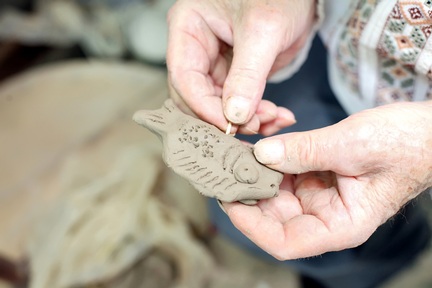
Clay modelling can also be a valuable social activity. Co-operation and sharing of ideas in groups can promote a sense of identity and a sense of belonging.
Commenting on the many benefits, Ms Chauhan said: "Clay modelling is a slow process and as the form starts building up, it takes a lot of patience to complete the details required on the surface. This allows individuals to leave a personal mark on their work. As a result, clay sculptures not only become a source of communication but also a source of reflection.
"Most of the participants in my workshop sessions instantaneously react to the material. I have found that the tactile contact of the material often becomes the starting point of conversation. An open discussion across the table makes it easy to know each other and be social.
"It is worth giving maximum time to develop individuals' ideas of what they want to create, thus helping to build their identity. Instead of explaining the process, a demonstration is more effective.
"Watching others working with clay or making a sculptural form certainly stimulates individuals. There is a definite involvement and the outcome of such interaction is their response and comments about the sculptural form, such as their likes or dislikes. Sometimes people reminiscence a past experience which they associate with the material or the form they are seeing."
Art projects in care homes rekindle imaginations and trigger memories
A two year arts care project involving residents at Gwalia Mynydd Mawr care home recently culminated in the unveiling of a new sculpture.
‘Yma a Nawr’ was funded by the Baring Foundation and delivered by Carmarthen-based Arts Care Gofal Celf. The project brought professional artists of various disciplines into Gwalia’s Mynydd Mawr care home to work with residents and their families.
The interactive sessions included printing, textiles and sketching.
Commenting on the success of the project, Jodie Boyd, occupational therapist at Gwalia, said: "The arts are proven to have numerous benefits within residential and nursing care settings, the storytelling and reminiscence work is particularly successful when a person’s short-term memory has started to deteriorate but their memories from years ago remain intact.
"Arts Care Gofal Celf's work has rekindled imaginations, triggered memories, provided opportunities for socialising and conversation and increased self-esteem."
Latest Features News
 25-Nov-19
2019 Election: Boris Johnson leaves social care in 'too difficult box' but Labour vows to end 'crisis'
25-Nov-19
2019 Election: Boris Johnson leaves social care in 'too difficult box' but Labour vows to end 'crisis'
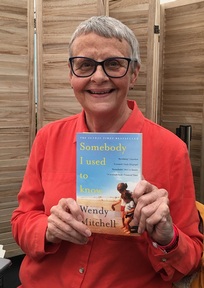 18-Oct-19
Podcast: Wendy Mitchell and dementia: 'My biggest fear is not knowing who my daughters are'
18-Oct-19
Podcast: Wendy Mitchell and dementia: 'My biggest fear is not knowing who my daughters are'
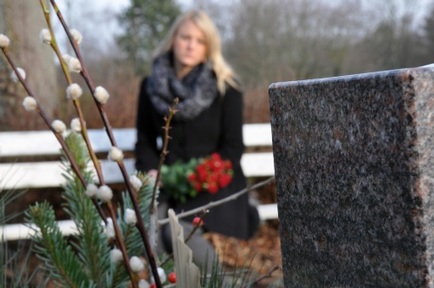 27-Sep-19
Exclusive: Care minister backs care workers' call for time off to grieve and attend funerals
27-Sep-19
Exclusive: Care minister backs care workers' call for time off to grieve and attend funerals
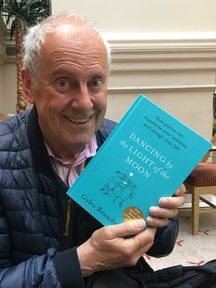 19-Sep-19
Podcast: Gyles Brandreth says poetry helps ward off dementia
19-Sep-19
Podcast: Gyles Brandreth says poetry helps ward off dementia
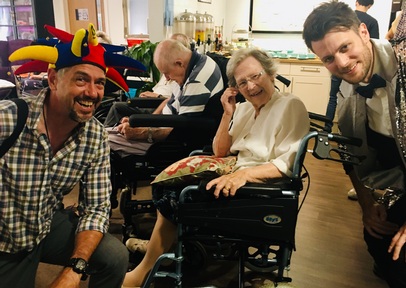 30-Aug-19
Edinburgh Fringe funnyman joins comics facing toughest audience at care home gig
30-Aug-19
Edinburgh Fringe funnyman joins comics facing toughest audience at care home gig